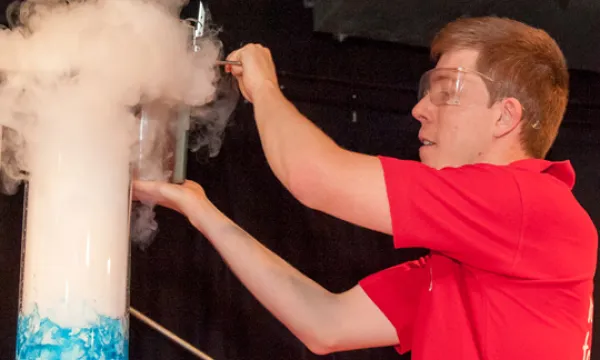
Splash and Bubble
This bubbling and explosive show engages students with liquids, gases and ideas about volume and making measurements.
Recommended for: KS1 (5-7) | KS2 (7-11)
Access considerations
Studio show

This bubbling and explosive show engages students with liquids, gases and ideas about volume and making measurements.
Access considerations
Studio show